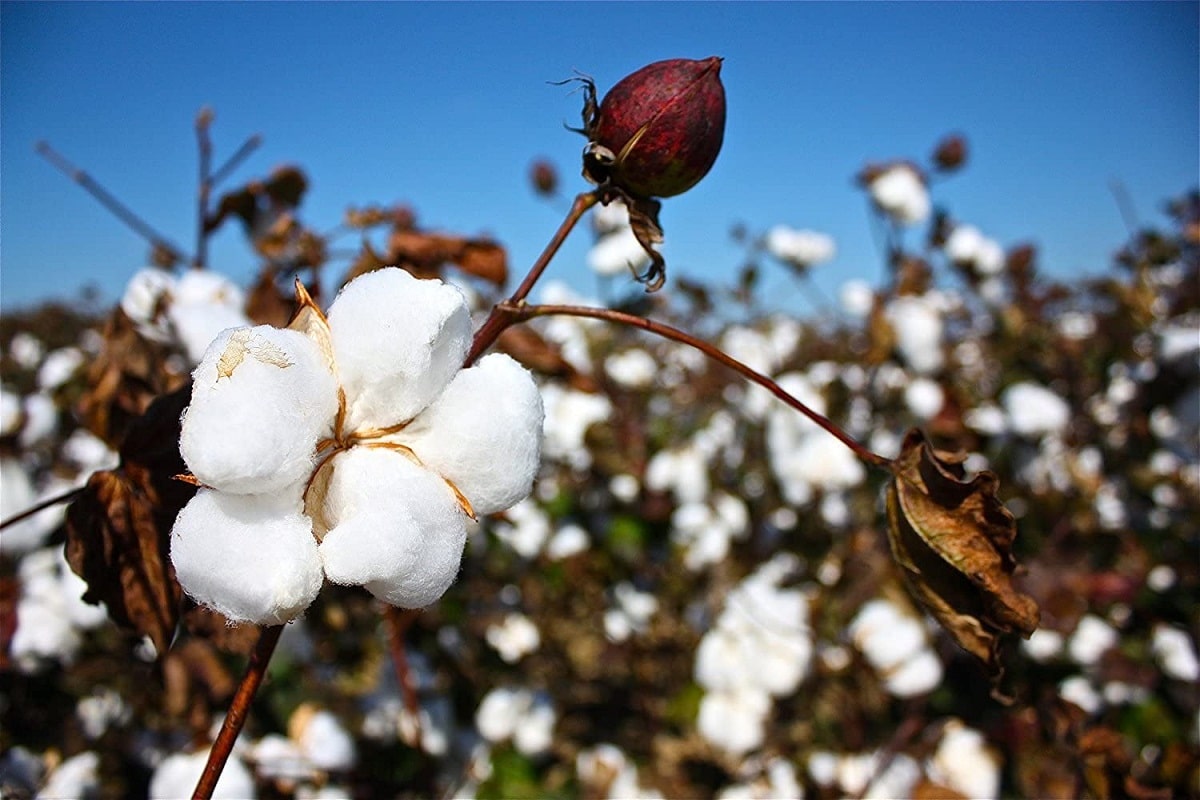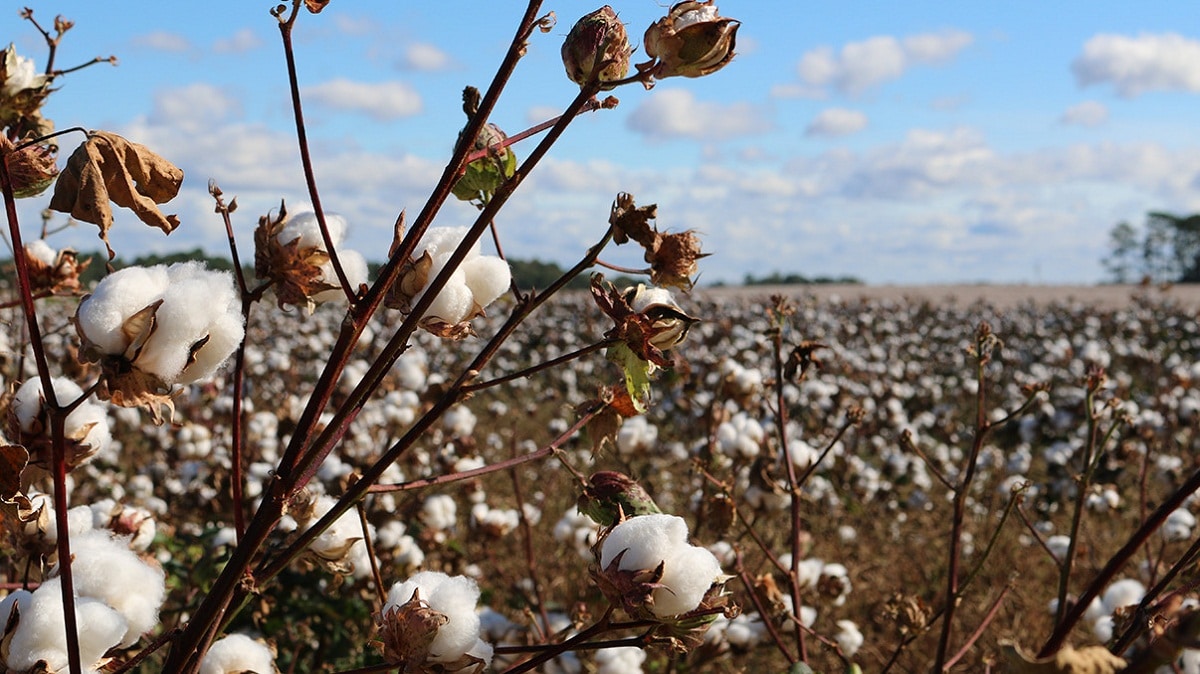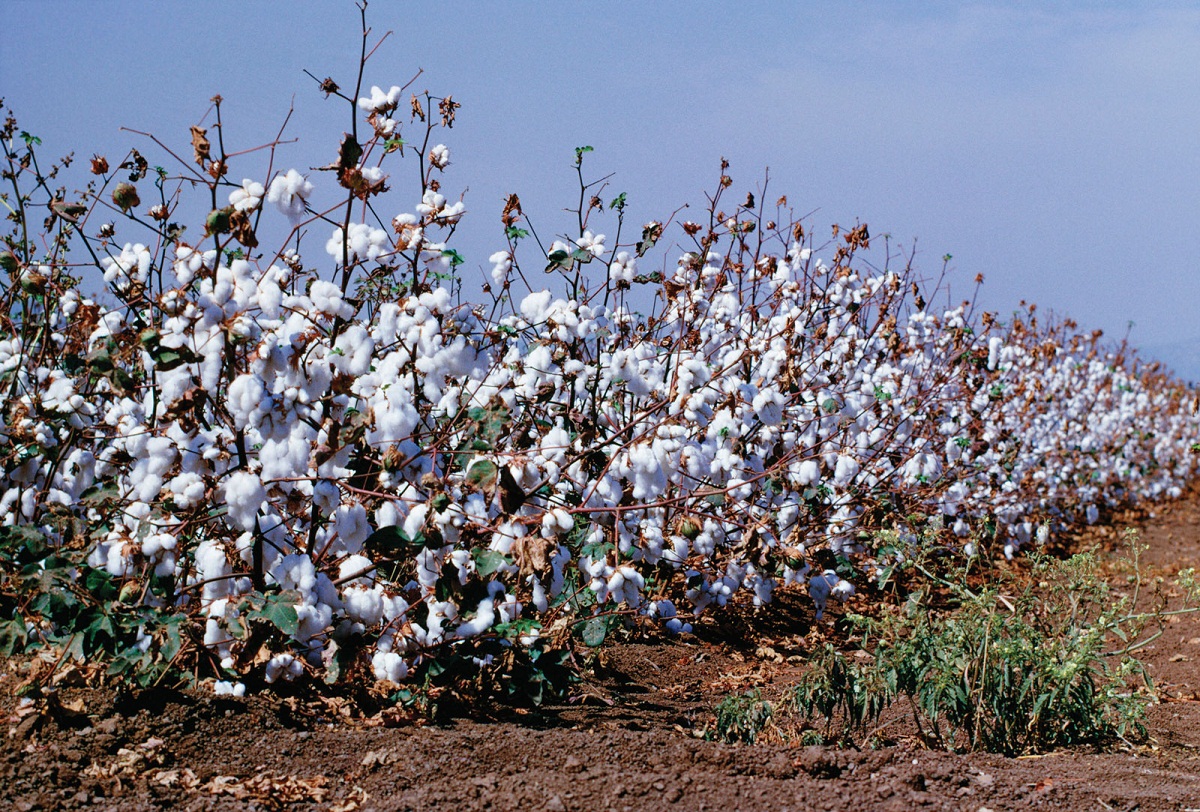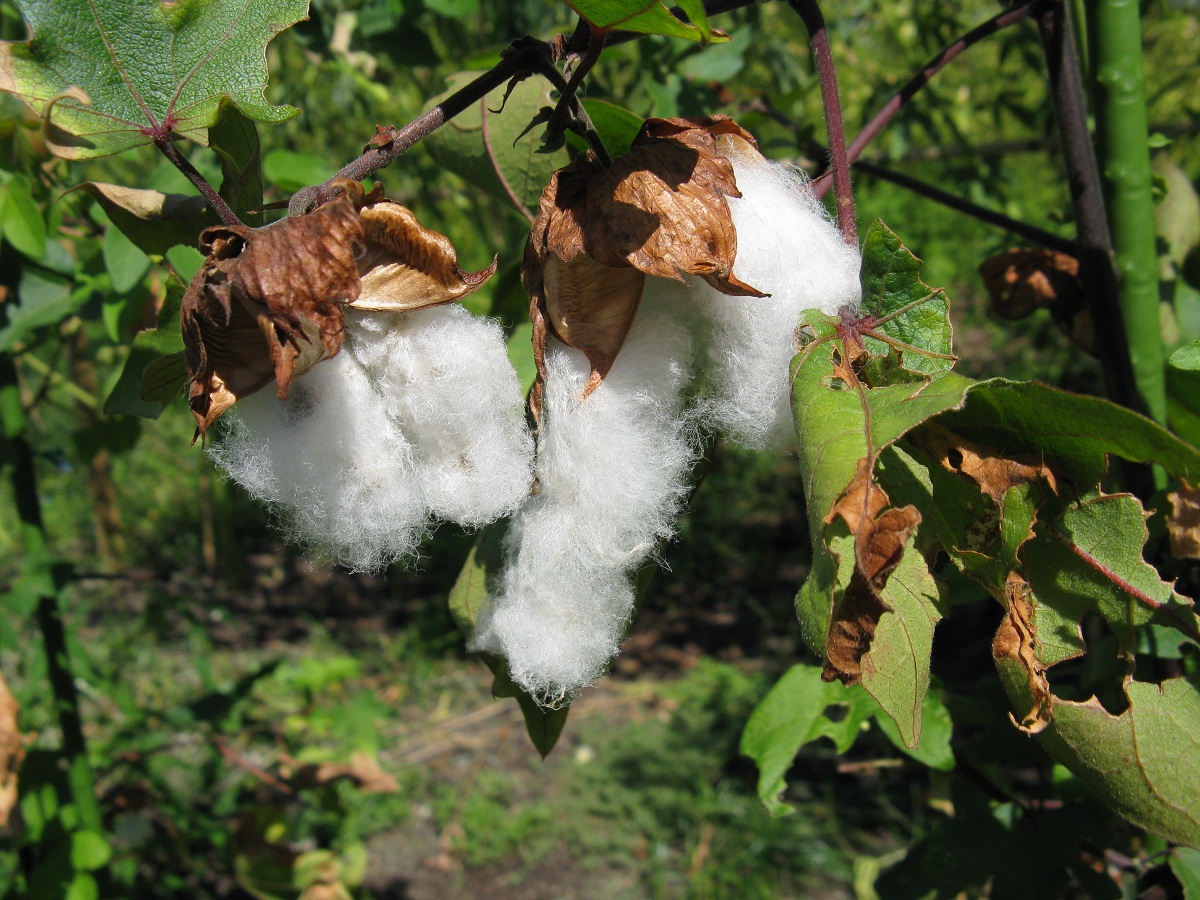
Have you ever wondered where they get their cotton and how is it grown? Well, it turns out that one of the softest gifts created by nature (if not the most) comes from a genus of shrub and herbaceous plants ideal to have in small gardens of the genus Gossypium. The best known and most used is the Gossypium hirsutum, which grows as an annual plant reaching 150cm in height in the highlands of Mexico. Due to its rusticity and easy cultivation, it can be planted in a wide variety of climates.
Cotton has been used by humans since time immemorial, especially and especially to make blankets and coats to protect themselves from the cold. But in addition, it is a very interesting plant which is well worth sowing, at least once in your life.
How is cotton growing done?

Cotton is used by humans since time immemorial, especially and especially to make blankets and coats to protect yourself from the cold. But in addition, it is a very interesting plant which is well worth sowing, at least once in your life.
The first of all is to get seeds. It is becoming easier to find distributors who sell cotton. That is why most likely your nearest nursery or garden center has, or can get them without problems.
The seedbed (which can be a forest tray, individual pots, ... whatever you have more at hand) is prepared in spring, just after the risk of frost has passed. As a substrate you can use a specific one for seedbeds, or a universal one. If you are paid better, but it really is not essential.
We must place it in full sun so that the plants can grow quickly and healthy. If you see that they grow very lanky, with very long and very fine stems, that is an unequivocal sign that they lack light.
To avoid unnecessary risks, once they are about 15-20cm tall they can be planted in large pots, about 45cm in diameter. It may seem like an exaggeration to you, but the more substrate the roots have, the more vigorously the plant will grow.
Cotton plants will bloom, if all goes well, in summer. The gender gossypium has white and yellow flowers, but the shape does not change. Once the flower is pollinated, the capsule begins to form, which, once it matures and opens, will expose the cotton.
This is a plant that, in addition to having various uses in the textile world, is very ornamental, ideal to have in the garden or in pots.
How to care for a cotton plant?
There are two important keys that will make your cotton plant crops successful, which are the correct state of the soil where it will be grown and fundamentally take into account the amount of irrigation it needs.
The cotton plant does best in soils that show some depth and that when watered, the water is retained. This has to do with the fact that cotton constantly needs moisture for its proper growth, so clay is often recommended as one of the essential elements for the soil of these crops.
Even when the substrate retains all the water with which you water, anyway always it is better to do a constant watering, that provides the right humidity to the soil, without exceeding this and leaving puddles. As you know, there are different ways of watering and you can choose any of these, obtaining positive results if the soil is kept moist.
Irrigation
These are the types of irrigation you can choose:
Drip irrigation
This drip irrigation technique It is one of the most used in recent times, especially in crops that are grown in urban areas, and represents one of the best ways to irrigate for a cotton crop.
This has to do with the fact that the drip will provide constant humidity, but at the same time controlled. From this way the plant will always have the necessary amount of water, but at the same time it will never form puddles that can harm it.
Groove Irrigation
From the first civilizations and empires to the present day, furrow irrigation is an effective method for the correct irrigation of the cotton plant, but it is also true that you will have to take some precautions.
In principle, the floor must show a perfect level, so that it does not lodge and stagnate an amount of water in a certain area of the crop, affecting plants. This technique today can also be expensive.
Sprinkler irrigation
Sprinklers for watering are also a very effective method, since they will even be programmed to water automatically at certain times of the day and the precise and necessary amount for this type of crop. The problem is that a crop sprinkler system can mean too much of an investment, not only of materials, but of work.
Subscriber
Another of the fundamental factors when it comes to the correct care of cotton plants is to provide them with the nutrients they need through proper fertilization of their land.
In the same way as with the risks, the subscriber must be perfectly balanced and present certain minerals that will be essential for its development. One of the most used to fertilize this type of plants is phosphorus.
In general, it is in large commercial cotton plantations that cotton is used in good proportions, because it gives the plant the necessary strength to open its capsule faster and more effective.
Also, another great nutrient for a cotton plant, as for many other plants, is potassium, which will make these crops grow stronger and healthier and even make their stems taller than if they were not fertilized. It is a plant that requires constant fertilization.
In the event that the adequate fertilizer is not provided, the volume of cotton that will be extracted from each plant will surely be less and the weakening of the plant will be seen with the naked eye.
When is cotton planted?

It will be in spring the right time to start growing the plants of cotton, when temperatures begin to rise and we no longer have records of colds that can affect it in the first part of its growth. We can do this even with the seeds that other crops have left us during the autumn times.
It will be at this time of year when the plant will have an environment conducive to proper development and growth, in a warm and humid environment that invades your garden in spring times.
In the event that you do not have seeds, you can buy them in any garden store or nursery that you can find to start your planting work. The you will soak in water for about a day, for the next day to choose those that have sunk in that water. Those that float won't do you good.
Then we will place the seedbed in a pot, which will be completely filled with soil and then watered, to finish by depositing two or three seeds in each of these seedbeds. This will be coated with a remaining substrate, and then water again, but this time not with direct water, but rather sprayed.
How long does it take for cotton to grow?
After the initial process of preparing the substrate and seeds for germination, we must wait between a month and a half and two months so that we see the plant for the first time and then we can transfer it to the garden floor or to different pots.
After this, the whole growth process will come, which with the perfect fertilizer will make our cotton plant have grown and be ready for fiber production in about six months, from the moment you have placed them in seedbeds.
Cotton varieties

Did you know not only is there a species of cotton that can be planted, but are there about 40 different types around the world? The cotton plant has different varieties, but it is known that only 4 of these species are those whose fibers can be used commercially.
These are the four varieties that are grown for later sale:
Gossipium arboreum
One of the most widely used plants for growing and trading cotton in the world comes from Sri Lanka and India, but It is found in many other places, among which a large part of the African continent and all of Europe stand out, being one of the most found in the cotton areas of Andalusia.
Gossypium barbadense
This type of cotton plant is native to southern areas, such as South America and even some lands that bathe the Pacific Ocean, but also in its southern part. It is one of the most used cottons because it is part of a select group called extra long fiber cottons.
Gossipium herbaceum
Another of the varieties that provides resistant fibers in its cottons and that has its origin in the tropical areas of Africa, although it is also used throughout Spain and Portugal, where it has become a species that grows naturally.
Gossypium hirsutum
This species It is also native to the Central American area and has become an emblem of the cotton trade throughout this continent, being very popular for being the most cultivated variety in the United States. This species represents the absolute majority of cotton production globally.
Different varieties of cotton trees can be found in all the hot and humid areas of the world. These are usually housed in forests that are not found at high altitudes, since they do not resist more than 300 meters above sea level and can reach close to thirty meters in their adult stage.
Without any doubt, the extraction of cotton from these trees is the greatest use of these trees, although it is known that its wood is widely used for its buoyancy characteristics, to make rafts and aquatic accessories.
Almost 3 years ago, in Spain I got to know the cotton plant live. Not knowing what it was, I fell in love with its flower and recognized it as a pretty bush. In a nursery, I saw an envelope with his photo. Without hesitation I bought a packet of seeds because I knew then that it was cotton. Unfortunately, the Chilean CUSTOMS took them away from me. Today I am happy and anxious, because I have obtained these seeds by mail from China. The seasons will be long for me, until the arrival of Spring, where I can finally start my cultivation.
Nancy, congratulations. A story with an ending that will surely end very, very well. 🙂 Enjoy your future cotton plants!
Hello. Could you tell me if you found planting cotton? Diana
I in fig (coastal area of Venezuela), I saw the bushes on the street, without any kind of care, but they seemed beautiful and I sensed that it was cotton, I took the seeds, and I am going to plant them, I hope they germinate ...
Sure you do, Katuska. Sow them in spring and in a few days they will germinate. 😉
I have already flowered plants in my garden and also with fruits, I can't wait for them to open
Hello Innocence.
Courage that there is less left 🙂
HELLO TODAY WHEN I WALKED I COLLECTED SEEDS FROM A PLANT THAT IS BEAUTIFUL I WILL SOW THEM TOMORROW I hope they come out, I WILL TELL YOU.
Good luck! 🙂
Dona Mónica tours for such an interesting article, I liked how clear and specific it is !!!
Thanks for your words, Roxana 🙂
I have a question that if it appears on this website it appears if the cotton tree is endemic or other
Hi Eduard.
Sorry, I didn't understand you 🙁.
Cotton grows naturally in all tropical and subtropical regions of the world. In Spain there are several endemic species, such as the Gossypium arboreum or the Gossypium herbaceum.
A greeting.
Do you know if you can buy the cotton plant in Spain thanks
Hello david.
In physical nurseries I do not know if you will find it, but seeds are sold in the Garden Center Ejea online store, and on ebay.
A greeting.
I have four of these templates that have taken me very well.
They are ready to transplant but I would like to know if it is to recommend a cement or plastic pot? Size 40 * 40.
They help me
Hi Patricia.
It does not matter if they both have holes. It depends more on whether you want to move them around tomorrow (in which case the plastic ones would be better) or if the wind blows a lot in your area.
A greeting.
HELLO. I HAVE A COTTON MATT AND IT GETS YELLOW AND PINK FLOWERS AT THE SAME TIME. I LOVE THIS PLANT. JUST BECAUSE THE COTTON COMES OUT, I JUST COLLECTED IT. AND I SAVE THE SEEDS
Hi Janeth.
Enjoy it 🙂
A greeting.
Hi there! I would like to know what care I should take for my three finished plants grown in pots in the coming winter.
When and how you should prune and fertilize them.
They are currently 50 cm tall. Thanks
Hi luciano.
The recommended cares are:
-Location: outside, in full sun.
-Irrigation: 3-4 times a week in summer, once a week the rest of the year.
-Pruning: only dry, diseased or weak branches in late winter.
-Subscribe: from the beginning of spring to the end of summer with ecological fertilizers.
A greeting.
Hello, my mother has plants and you already have the cotton outside, we want to use it ourselves for an emergency such as putting alcohol on it and healing a wound (like the commercial that they sell you) but, we do not know if we have to give it any treatment before using it.
Thank you!